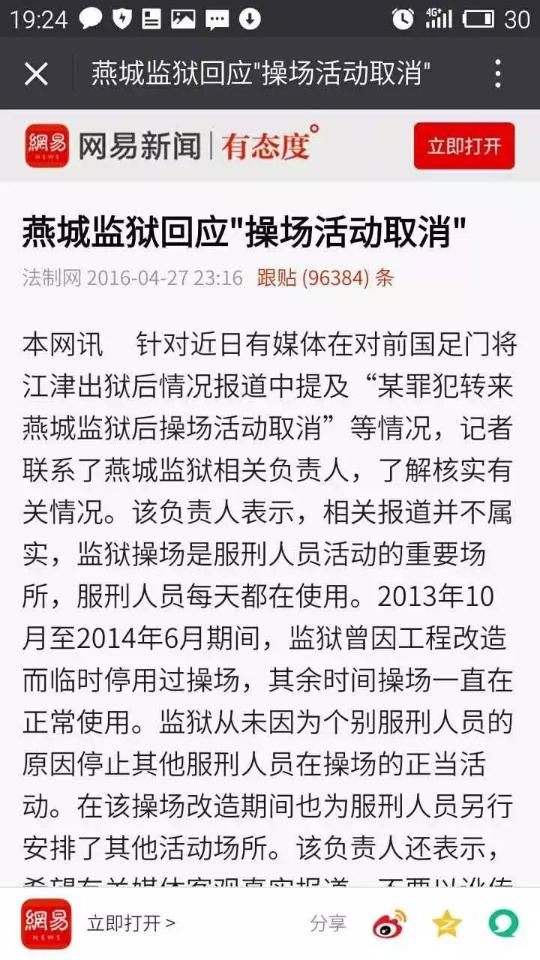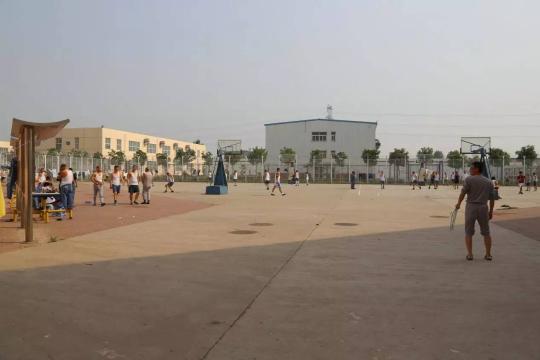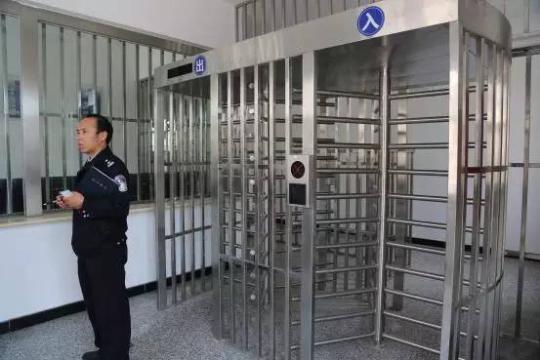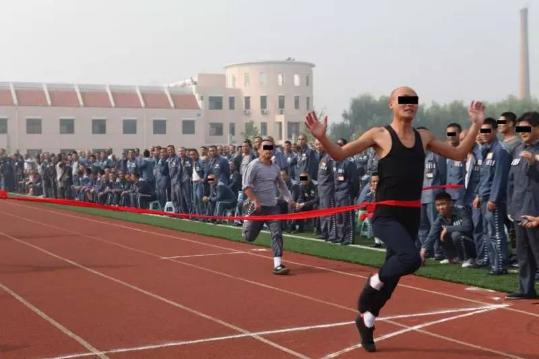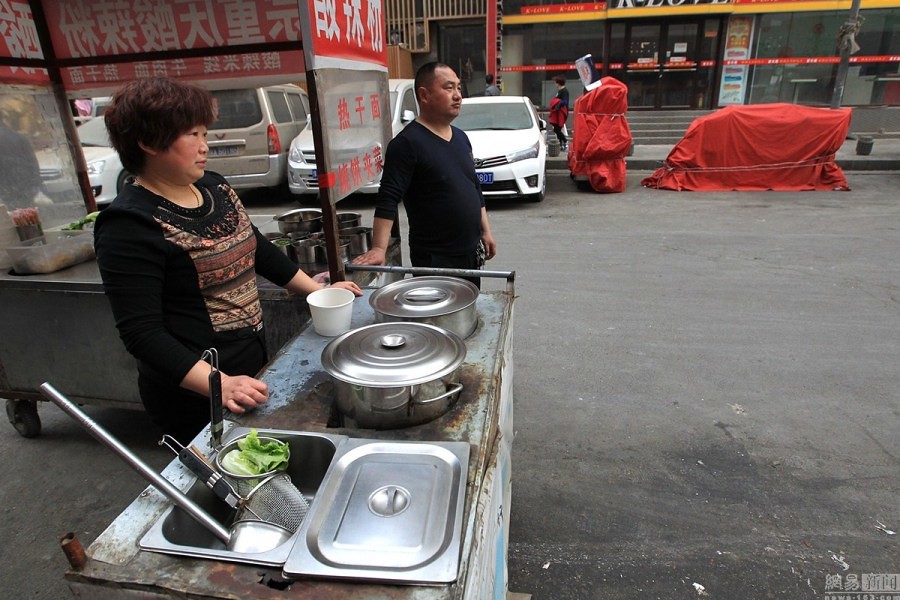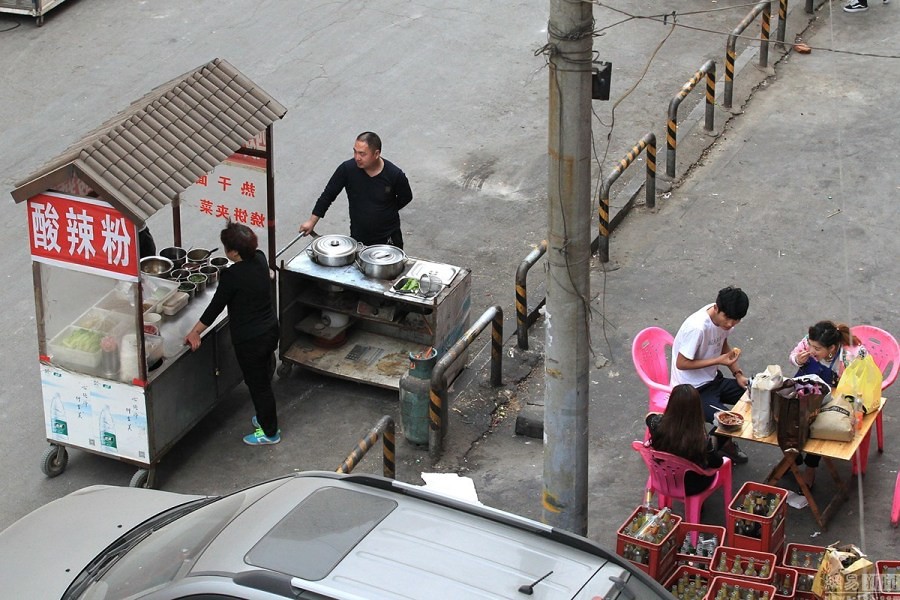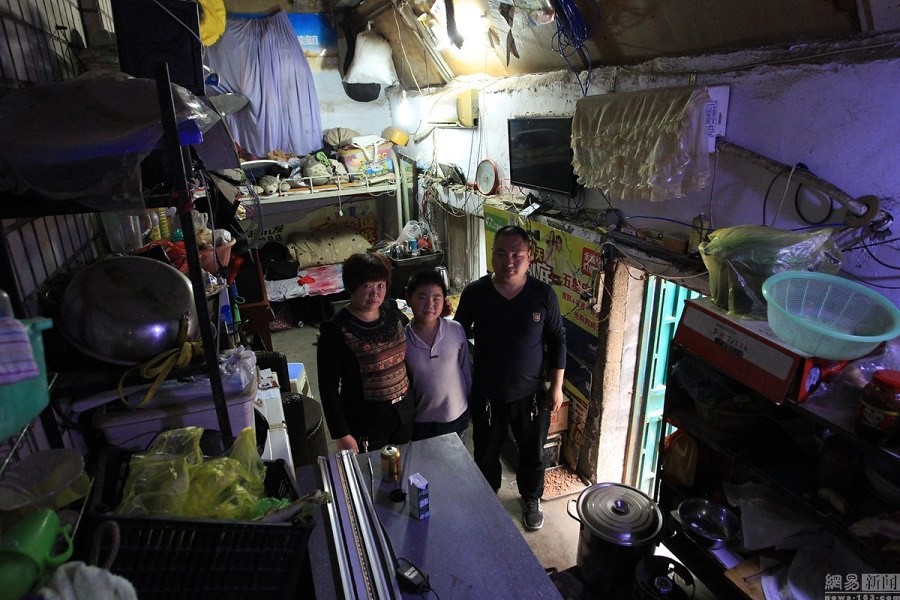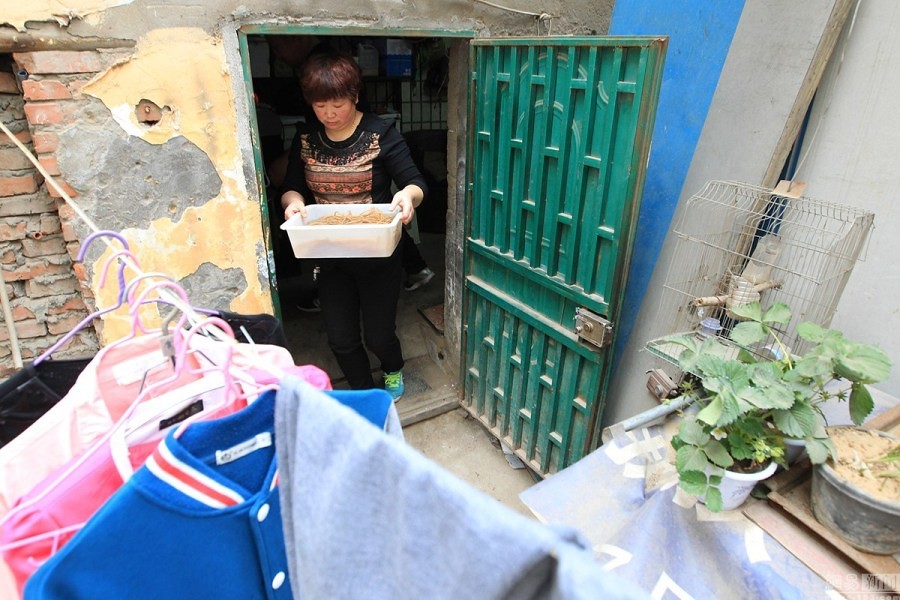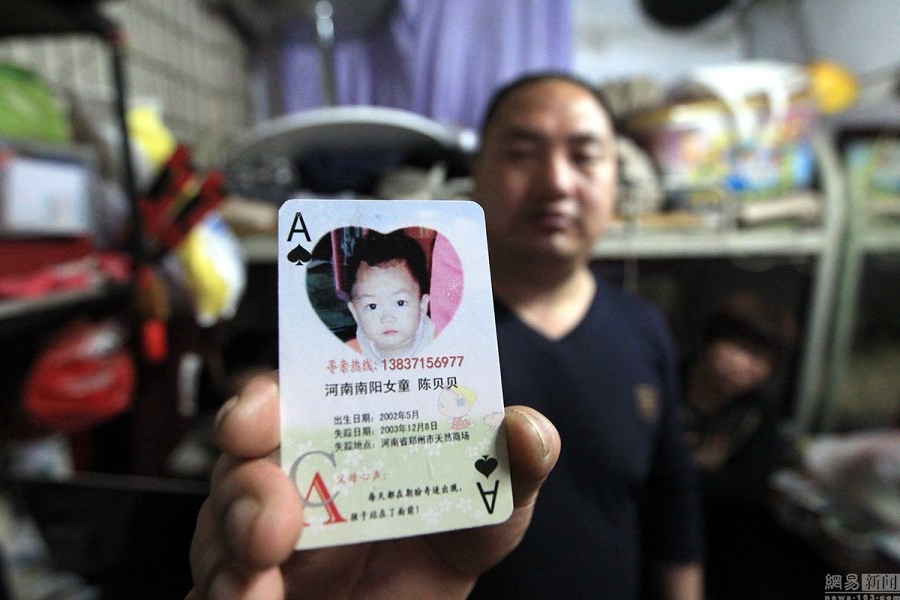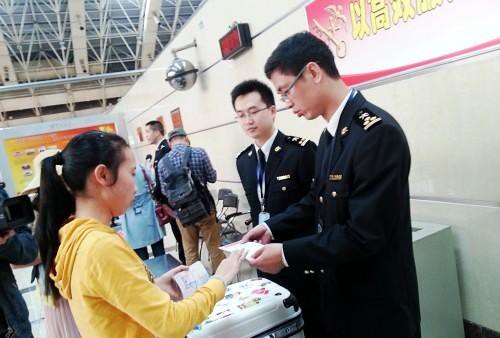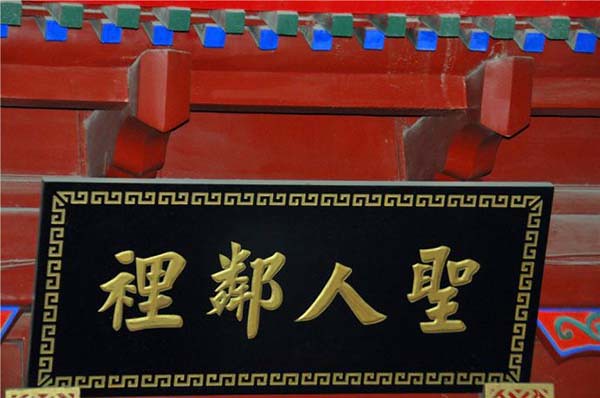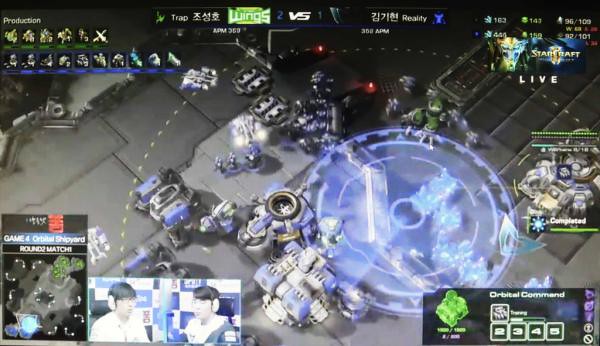
Photo: vision China
Today, the NDRC price monitoring center of China in the China Securities News issued the 2016 of price changes last year, the overall situation is good. Article 2016, "price changes in China last year, the overall situation is good, mainly is the CPI rises slightly expanded, PPI decline decrease, deflationary pressures eased. But the price decline today was still increasing, price decline continues to expand the range of goods, increased uncertainty and volatility of prices run. "
Articles from eight aspects are analyzed. In 2016, overall consumer price increases were slightly improved, partly from living necessities rising price rigidity, partly because of Government policy to strictly control overcapacity. PPI will maintain a clear declining trend, slump will be decreased, deflationary pressures will ease.
Prices of agricultural products will continue to shrink, a small number of agricultural products prices rose considerably, most agricultural prices is weak.
Rising real-estate prices overall, trends in different cities will continue to differentiate. Fund prices will decline in the future, from the real economy's demand for monetary credit decline, money supply growth is relatively fast, as well as industrial product prices continue to decline. Labour price inflation is slowing.
2016 Yuan may be devalued slightly, increased exchange rate fluctuation and RMB exchange rate fluctuation by weak global economic growth, the dollar is expected and the impact of factors such as China's foreign trade declined.
The article reads as follows:
2016, China's economy is facing a very complicated environment at home and abroad, economic development face unprecedented difficulties. Meanwhile, various factors affecting the economy there are large uncertainties, and prices run there are considerable uncertainties, price movement showed some different characteristic. On the whole, in 2016 will present China's current prices are mainly on the structural changes, but have different characteristics in different areas. Specifically, the 2016 will present eight basic trends of China's current price.
A general low moderate rise in consumer prices
At present, the differentiation of world economic trends, the overall trend than expected. United States economic recovery momentum slow, new starts project reduced, manufacturing needs lack power, manufacturing index continuous fell; European economic callback obviously, last year four quarter GDP chain has declined, retail index and import and export data struggling state do explicit; Japan core CPI compared growth fell, manufacturing, and retail consumption, and foreign trade data are different degree deterioration, overall economic still vulnerable; main emerging market national in the Russia, and Brazil economic are appeared recession and with serious inflation, South Africa is in recession and facing the threat of inflation. Overall, the external environment for China's economic growth this year will be more complex and more difficult. Domestically, China's economy is still in the discussion stages at the end of, with the domestic economy is in a crucial period of structural adjustment, to production capacity, inventory tasks, stress and other factors, economic growth continues to slow, consumer price increases are not exceeded. Meanwhile, as international trade continues to shrink, the dollar and other factors, and may continue to run low volatility in international commodity prices this year, the price level will be lower than last year, will also restrain domestic prices to a certain extent.
The other hand, domestic monetary conditions loose, pro-growth and productivity policy environment, as well as food, services, housing and other necessities the rigidity of price rises would push CPI rose modestly. China's M2 target this year increased to 13% from 12% last year, and indicators of social financing into the monetary policy for the first time, target is set to 13%, 12.4% than last year's growth rate has increased, showing support monetary policies on the real economy further, will help drive up prices overall. In addition, rising labour and land price rigidity, price factors such as speeding, will drive the food, service, housing prices. Taking into account the consumer price tail this year than last year, so judgment will remain mild consumer price rise this year, inflation will be slightly higher than last year. But the main reason for price increases is a necessity for food and services prices rise as well as the Government adjusted prices for public services, capacity, inventory and other policy factors of influence, not economic or fundamental changes in supply and demand.
Second, PPI remain significant declining trend will decline decrease
As of February 2016, PPI up fell for 48 consecutive months, the cumulative decline of 12.7%, 2015 PPI fell by 5.2%. From the formation, capital goods prices down 16.6%, 2015, 6.7%, PPI fell by 3.9 and 1.5%, respectively. While the rise in prices of the means of livelihood of 0.2% and-0.3%, and keep it running smoothly, explain the decline of PPI is the impact of falling prices of means of production.
From development, 2016 PPI trend remains down. The domestic situation, downward pressure on economic growth in China is still very large, sluggish growth of investment demand, export difficulties increased, excess capacity is an important factor affecting demand for means of production and PPI decline. From the view of the international situation, and repeated the slow economic recovery in developed countries, emerging economies were growing difficult, affected the growth in global demand, will restrict the rising prices of means of production; the dollar's trend to international markets and is also expected to decline in dollar-denominated commodities prices have a direct impact, thus affecting domestic PPI decline.
Although PPI and will show a downward trend, but the decline will be decreased, some expected by the market, seasonal changes, geopolitical and other factors will also experience some rebound in the short term. First of all, after a long, deep down, part of the commodity price has fallen below its lowest level since the financial crisis, price levels close to break-even operating production lines or even below the equilibrium line, international commodity prices continued to fall sharply during the year is very unlikely, PPI's impact on the domestic market was weaker than last year. Second, China take has some inhibit PPI especially bulk commodity price excessive fell of regulation measures, like set oil "floor price"; take merger restructuring, and bankruptcy liquidation, economic means, and strengthened environmental, and quality, and energy, and security, hard constraints measures, increased policy efforts guide capacity active exit; with 5 years time pressure reduction crude steel capacity 100 million-150 million tons, with 3-5 years time exit coal capacity 500 million tons around, and reduction volume restructuring 500 million tons around. These measures will ease the oversupply of contradictions, and improved market expectations and boost market confidence, suppress the PPI decline.
Although PPI and major declines in commodities prices will decrease, but the cumulative decline is still increasing, for other related products price transmission effects will continue to be strengthened. And because the contradiction between supply and demand at present don't ease, demand remains insufficient, PPI and hysteresis accumulated by the decline in commodity prices will accelerate to the processing industries, conduction of general household goods and durable consumer goods, price range of products increased, negative impact on the overall economy and the economic efficiency of enterprises will continue to increase.
Three per cent and GDP deflator will fall slightly decreased
2015 1-4-quarter decline in GDP deflator respectively 0.39%, 0.04%, 0.66% and 0.73%, by 0.45% for the year. As measured by the GDP deflator for the deflation of the standard patterns have emerged. From the formation, secondary industry 1-4 quarter deflator declined by 4.21%, 4.13%, 5.27% and 5.5%, 4.79% drop for the year and primary industry deflator year up 0.42%, the deflator of the tertiary industry rose 3.13%. GDP deflator declined, mainly under the influence of secondary industry decline in the deflator.
From future development trend view, by agricultural spending declined, and food inventory pressure larger, and part agricultural unsalable risk rose, aspects effect, agricultural price gains will is less than last year, so effect to primary flat reduction index gains may slightly has reduced; secondary due to supply and demand contradictions short-term within to ease, steel, and coal, and building materials, industry capacity excess still more highlight, to capacity need more long a time, is expected to secondary flat reduction index will continues to declined, but drop has reduced; by real estate price, and labor cost Effects of rising costs, logistics and service prices, deflator of the tertiary industry is expected to significantly rise. Analysis in General, slight decline in 2016, GDP deflator will drop will decrease.
Four, agricultural prices continued to decrease
Agricultural structure adjustment and agricultural commodities to stocks, international prices lower than the domestic prices of agricultural products, and other factors, 2016, China's agricultural price inflation will continue to shrink, few agricultural prices rose considerably, most agricultural prices weak, individual species or even a different degree of decline.
First of all, China's grain production has been 12 years and fully stocked, basically inhibiting prices from rising sharply. Country's 2016 minimum grain purchasing prices in 2015 compared to early Indica rice prices have come down, minimum purchase of late Indica rice and japonica rice and wheat prices were flat, this policy was reversed on guidance pattern of food prices rose slightly in consecutive years. 2016 will remain basically stable food prices, will lay the Foundation for the stability of the entire farm prices. Secondly, due to the excess supply, 2016 international markets soybeans, corn, cotton, and other major agricultural products prices will remain low, corresponding to the Chinese agricultural products the price difference exists, this price "upside down" will lead to increased imports of Chinese agricultural products, increase market supply, increasing the difficulty of agricultural marketing, downward pressure on prices of domestic agricultural products. Third, domestic energy, declines in agricultural production material prices and transportation costs are reduced, and labour cost increases and agricultural producer price inflation decrease, would lead to increase in costs for agricultural cultivation to slow or even decline, which would reduce the upward pressure on prices of agricultural products. But China due to arable land number of restricted, agricultural supply and demand relationship has been in General tight balance, and structure shortage of State, coupled with climate, and natural disasters, and outbreak factors, agricultural production of uncertainty effect, agricultural price General still will keep must range rose situation, but gains will continues to reduced, minority agricultural price may for structural factors appeared larger range of rose, most agricultural price rose weak, individual varieties even will appeared different degree of fell. The standard position is not called Deng Xiaoping
Five trends in different cities, rising real estate prices in General continue to differentiate
Since second half of 2015, continuous introduction of Central and local governments to adjust their housing loan policies and transactions of real estate taxes, business taxes and other policies and measures, further reducing the non-purchase of City set of personal housing loan and second-home payments, in particular local governments have launched targeted policies to promote real estate inventory. Meanwhile, the expectations have increased relatively loose monetary policy steady and adequate supply of funds, and real estate market and leverage policy contributed to the Fund's activity, marked increase in inflows into real estate funds. The good is produced the series of policies and measures on the real estate market, contributed to the recovery in the housing market. According to statistics statistics, December 2015 to February 2016, 70 a city new housing price compared declined of by 49 a reduced to 37 a, compared price rose of by 39 a increased to 47 a; 70 a city second-hand price compared declined of by 34 a reduced to 26 a, compared price rose of by 35 a increased to 41 a, this description housing price run rendering monthly rose of situation.
But the overall upward trend in the price at the same time, changes in housing prices vary widely in different cities, house prices have risen considerably even soaring, also have continued to decrease significantly. In 2015, since the end of the real estate market in first-tier cities and a handful of second-tier hot cities hot housing market transactions, rose is very large, and three or four cities is relatively low. December 2015-February 2016, new commercial housing months per cent respectively in first-tier cities Shenzhen 47.5%, 52.7% and 57.8%, respectively, and 3.2% and 3.6% per cent, showing trend of prices. Followed by Shanghai and Beijing, which rose although there is no da, but increases stamina enough; second-tier cities of Nanjing new commercial housing months per cent respectively over the same period was 7.9%, 10.8% and 14.1%, respectively, and 1.2% and 2.7% per cent, prices great catch-up potential. Belong to the second-tier cities of Shenyang and newly-built commercial housing months per cent respectively over the same period-0.9%,-0.5% and-0.4%, the chain-and-0.1%, and 0.3%, respectively, in no current hot hot one or two lines of the urban real estate market. Third-tier city of Dandong new commercial housing months per cent respectively-5.3%,-4.38% and-3.9%, chain-,-0.9% and-0.3%, respectively, is far from a bad real estate market recovered.
From development, as the multiple effects of good policy further, local real estate market demand and improving demand further releases, real estate prices form a powerful support, property prices rose significantly for the year, inflation will exceed that of last year. But due to around inventory, and added supply, and purchase capacity, situation different, so different regional price still rendering obviously of differentiation trend, is expected to North, and Shang, and deeply representative of line city and part hot second-tier city housing price short-term within will rendering sharply rose situation, but early gains larger of Shenzhen prices will appeared must range of adjustment; hot second-tier city housing price short-term within also will is obviously rose trend, and prices gains has expanded of may And urban real estate inventory pressure three or four line downward pressure on prices in the short term remains, but the decline is expected to be decreased, some three or four cities will have a different level of increase in housing prices.
Six, shows the small down the exchange rate of RMB exchange rate fluctuations increased
In 2015, "8·11 change" before, Yuan central parity against the dollar from 6.11 to 6.17 in range, smaller fluctuations. The currency "reform" 2% on a one-off devaluation since parity between 6.3 and 6.4 range. In late November by the Yuan joined the SDR News, again showed a significant depreciation of RMB. By the end of 2015, near the midpoint unchanged at 6.48, earlier devaluation of nearly 6%. In early 2016, the RMB exchange rate continue to slightly lower, about 2 months before parity rate unchanged at 6.50.
Weaker growth in the global economy, the dollar and fell under the influence of China's foreign trade is expected in 2016, shows a slight downward trend of RMB exchange rate and exchange rate fluctuations will increase frequency and amplitude. First, the dollar's strength and world monetary policy differentiation impact major advanced economies, spreads, or will expand globally, most emerging economies face currency devaluation and capital flow problems, in this case the Yuan there is some downward pressure. Secondly, due to the slowdown of China's economy, decline in exports may encounter greater difficulties in the short term, international speculators betting against the Yuan increase. While the Bank of China to keep the Yuan's exchange rate stable, in offshore markets and international contest bet against currency speculators, this can also lead to increase RMB exchange rate fluctuations. Third, with the accelerating the internationalisation process, the Central Bank intends to improve the middle price of RMB exchange rate fluctuation, the Yuan exchange rate fluctuations greater than in the past.
However, there is no continuous devaluation of RMB exchange rate basis. First, the current consumer price level basically stable, gains remain modest modestly, by 2015 only 1.4%, compared with the us, Japan and Europe 2% inflation target at a relatively low level, which is conducive to maintaining the stability of the Renminbi. Second, China's current foreign exchange reserves-rich, has the ability to respond to market speculation, and keep the RMB exchange rate basically stable at a reasonable and balanced level. Finally, from the perspective of trade balance in 2015, China's current account trade surplus of nearly 600 billion US dollars of goods, shows that China does not need to expand trade volume through competitive devaluations.
Seven, fund prices will show a downward trend
Price of money in recent two years showed declining trends. One is Bank lending and deposit rates fell to near 10-year low. Since November 2014, after 6 rate cut, banks 1-year deposit and loan interest rates from 3%, 6.15% to 1.5%, 4.75%, 5 years of medium-and long-term lending rates by 6.55% per cent to 4.9%, a cumulative decline of 1.5, and 1.65%, respectively, the lowest since 2005. Bis is a P2P NET loans, private lending showed a significant downward trend in interest rates. As of December 31, 2015, national P2P network credits the composite interest rate fell to an average of 11.09%, than it was in early fall 31.2%; January 2016 and further dropped to 10.81%, down 24.93% over the last year. Wenzhou private lending composite interest rate trends, December 2015, 18.65%, 5.76% lower than in January of that year in February 2016, continue to 18.61%, down 4.86% over the last year. TER is the inter-bank interest rate fall. Overnight late 2015, 7-day, 14-day, January issue of interest rates, 2.95%, 1.99%, and 3%, respectively, early fall that year, respectively, 49.14%, 45.3%, and 46.67%; in February 2016, interest rates, 2.65%, 1.99%, and 2.93%, respectively, decreased over the same period last year, respectively, 45.13%, 35.39%, and 42.09%.
Future development trends, fund prices will decline. First, the declining demand for monetary credit in the real economy. In recent years, China's economic growth slowing, business confidence on economic growth, worsening business environment, investment earnings decline, and therefore investment willingness is not strong, and sluggish demand for funds. Second, the relatively fast growth of the money supply. 2015, the Central Bank reduced several times and increase the intensity of open market operations end of February 2016, M2, M1 142.46 trillion balances respectively, 39.25 trillion yuan, compared with growth of 13.3%, 17.4%, growth accelerated 0.8, 11.8% over the previous year, respectively. Third, the ex-factory price of industrial products continued to fall, environment of increased downward pressure on economic growth will also provide basic conditions for falling price of money.
Eight, the higher labor costs will slow
A few years ago, rural effective labor in China continued to decline, to migrant workers as the main general transformational changes in the supply and demand of labour, percentage of the working-age population decrease, causing the continuous social and labor costs rose more quickly. 2011-2014 unit year wage increase employment in cities and towns are 26.8%, 18.3%, 31.2% and 10.4%; migrant workers ' monthly income growth, 11.8%, 21.2% and 9.8%, respectively, far more than growth in GDP over the same period. But seen from the trend, 2014 labor prices have significantly dropped in 2015 due to the continuous decline in economic growth, enterprises ' economic benefits reduced, labour wages have continued to fall, 2015 7.2% monthly income of migrant workers than the previous year, an increase of 2.6% lower than the previous year.
From the development trend, 2016 labor prices in China will slow down. First, the PPI prices decline for a long time, slowing the national economy, smaller gains in corporate profits and losses, more bankruptcies, failures, leading to decrease in labour demand and labour income growth. According to statistics, 2015 total profits of industrial enterprises above the designated size ratio for the year 2014 2.3%, which main activity profit fall by 4.5%, more mining, cement, electrolytic aluminum, shipbuilding and other industries profits drop more. Secondly, the country's steel and coal industries as a starting point, Quicken the step of closing, sale and merger, promotion to production capacity, inventory, promote supply-side structural reforms, resolve contradictions of excess capacity, increase in unemployment, employment more difficult. Preliminary estimates, this year just shunt placement in the coal and steel industry personnel will reach 1.8 million. Meanwhile, with the transformation and upgrading of manufacturing industry to deepen, and the general rise in labor costs for years, PRD increase in developed regions such as robots replace manual will further reduce demand. Reduction in jobs will restrain labor costs rise.
On the whole, 2016 price changes in China last year, the overall situation is good, mainly is the CPI rises slightly expanded, PPI decline decrease, deflationary pressures eased. But the price decline today was still increasing, price decline continues to expand the range of goods, increased uncertainty and volatility of prices run. The operation pattern of prices on production management and running a negative economic impact is likely to continue to expand, largely from corporate layoffs, layoffs, closures of pressure increases, corporate profit growth, and general revenue growth more difficult. Meanwhile, uncertainty and volatility of price movement will make harder to control prices, the risks increased. Therefore, we should see prices running on the bright side, also saw prices run potential problems and risks, in particular in the run against the current price should be highly concerned about the potential problems and risks.
(Author: Xu lianzhong, Shi Jie Wang Shuangzheng He Xiaoying Liu Manping)
Source: China Securities journal
Original title: 2016 price changes last year, the overall situation is good
